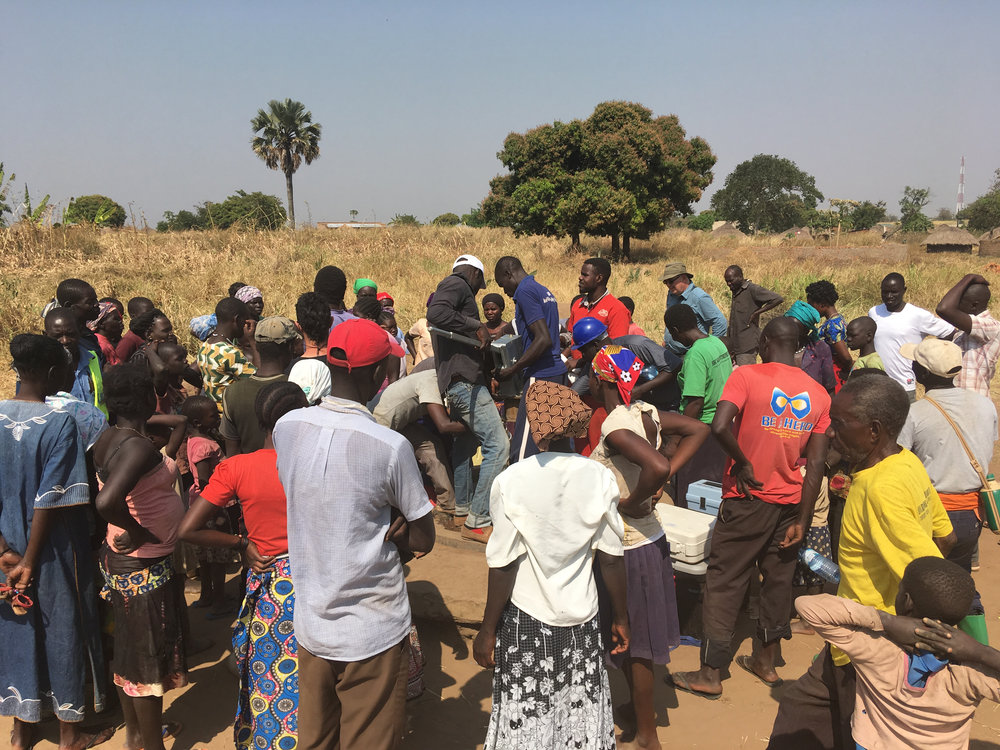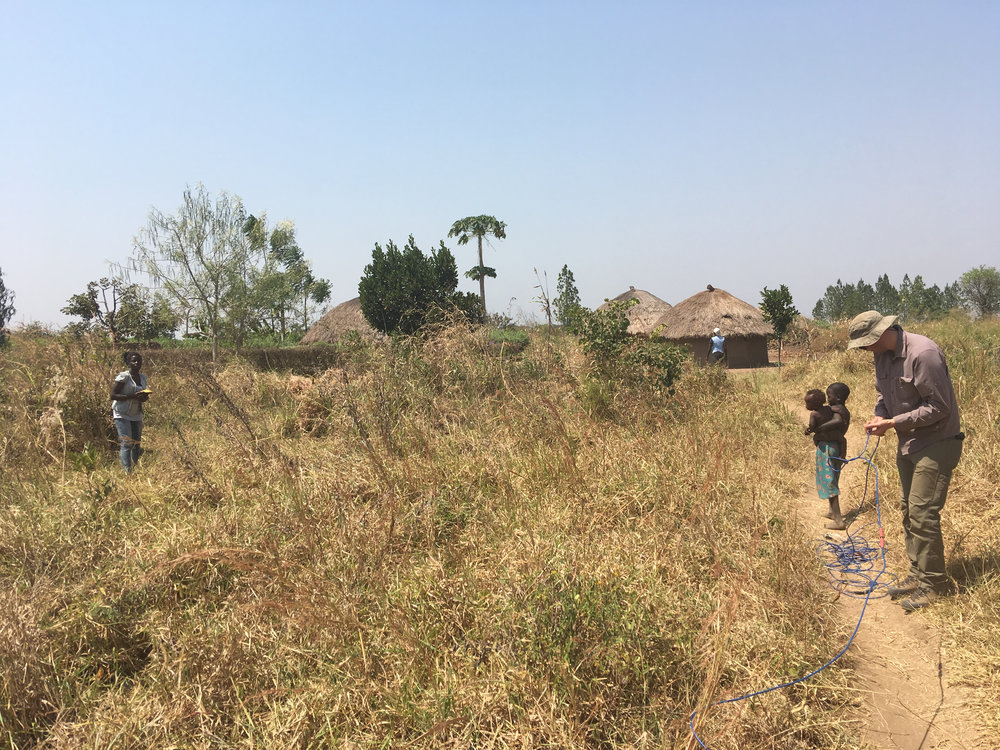Yesterday was a productive day for us. We got an earlier start and only had ~20 minutes to drive. We arrived at the first well to fix – it was not functional, totally overgrown and the pump head was removed by locals so it didn’t get stolen.
We started to investigate, but found the well very shallow – only about 8 m deep with just a few centimetres of water. The surrounding area was very green, so it seemed like something must be wrong – the well shouldn’t be dry. We put our borehole camera down the well to take a look and found that it was totally full of sticks and branches – very likely the well stopped functioning, then kids threw stuff in it for fun. Unfortunately, there’s no easy way to fix this. The only solution is dig a new well at a cost of 4 million Uganda shillings (or a little more than USD$1000), which is very expensive for a small village.
(For context, ~100 households use a well, they pay the water committee 2000 shillings per month, so that’s roughly 2 years to raise 4 million shillings. But where does this money come from when there isn’t a working well to provide income? Takes good community organization.)
Anyway, we still ran our resistivity survey at that site, but had to leave the nonfunctional well. However, there is no shortage of wells to repair, so our crew moved on to a nearby community. They had a working well, but it produced water at about half the rate it should. (Ideally, a pump can fill the yellow 20 litre jerrycan in about 50 seconds, this one took almost two minutes.) Low flow was caused by the usual culprit – rusty galvanized steel pipe, hastily patched with rubber straps. The well head was also a bit banged up from misuse. We also found water from depths of about 8 m down to about 38 m, but the pump was 9 m deep. This means the water could be drawn down below the pump very easily.
Overall, the fix went well – 15 m of new PVC pipe (much better than the prior 9 m) plus a new well head. One of the students, Polycarp, ran a short class for the villagers on how to use the well efficiently, without damaging it.
We also ran a resistivity survey here, winding through huts, along pathways, and into a field of cassava plants.






